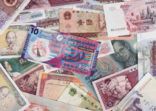“The level of disclosure among high yield issuers is patchy, because many of them are private companies,” James Tomlins told FSA during a recent visit to Hong Kong. “But the MSCI coverage of the sector is approaching critical mass [at around 85%].
“[Therefore] building and maintaining corporate relationships with many of the issuers is important in order to get a full picture of their activities.”
He co-manages a global high yield ESG bond fund which has about 100 individual holdings that are effectively an ESG subset of the 160 bonds held by M&G’s conventional high yield bond fund (also run by Tomlins).
The ESG fund excludes specific industries, such as tobacco, gambling, armaments, alcohol and, most recently, thermal coal and nuclear energy.
“Even if just a small part of a company operates in one of these excluded sectors, the fund will not hold its bonds,” said Tomlins.
However, the most active element of the ESG process is “integrating scores derived from the MSCI and internal analysis into portfolio construction”. On a scale of one-to-10, the fund will not buy the bonds of a company with a rating of less than three, and it will typically rebalance its holdings to the upper end of the spectrum.
The ratings are compiled from an analysis of corporate governance issues, such as transparency, treatment of stakeholders and corruption; impact on local communities; and activities that have a negative (and positive) effect on the environment. M&G has a central ESG team whose analysis is incorporated in the bond research and portfolio construction process.
However, Tomlins doesn’t take ESG to the next level of so-called “impact investing”.
“It is only really effective in the private debt market, but as a mutual fund we need the [relative] liquidity of publicly-traded bonds,” he said.
Yet, as a large global bond house, “M&G has the presence and power to engage with companies on ways to improve their business practices,” he added, and cited the discussions the firm has held with the UK supermarket chain, Iceland, about its sale of palm oil products.
Performance challenges
Of course, most investors want to enjoy positive returns from their funds, above all else. M&G’s ESG fund, which is available to investors in Hong Kong and Singapore via private banks, has had to struggle since inception in October 2017, just ahead of the annus horribilis for high-risk asset classes in 2018.
It has posted a 4.47% positive return in US dollar terms to the end of May 2019, underperforming its benchmark index (6.04%), but ahead of M&G’s conventional global high yield fund (4.17%), according to FE Analytics data.
Its 3.11% annualised volatility is less that the conventional fund (3.94%), perhaps and indication of the greater stability of bonds subject to an additional level of analytical scrutiny.
“But, liquidity in the sector is generally poor, so it was difficult to add risk and take advantage of the ballooning spreads over government bond yields at the end of 2018. The differential narrowed from 600bps to 300bps within a few weeks, but the market makers (that is, investment banks) were reluctant take on balance sheet risk,” said Tomlins.
“In fact, there is an inherent illiquidity in the high yield bond market.”
Issue sizes tend to be small, bonds are often tightly held and secondary trading is conducted manually. That might explain why the the fund, which has only $23.1m of assets, contains around 100 individual holdings: the positions are easier to dispose of and accumulate.
Although, the fund has a total return mandate, in the high yield sector, income comprises most of the return. In its short history of 20-months, it has had an income distribution yield of about 6.6%.
Despite the ESG bias the portfolio allocation decisions are primary determined by conventional processes.
The fund is overweight European bonds and underweight US bonds, mostly due to the enhanced yield pick up for similarly rated credits earned simply from the mechanical function of the hedge back into US dollars, that is, the short-term interest rate differential of about 2.6% between US and Euro libor.
In terms of sectors, the fund has a small exposure to cyclical industries, such as telcos, and is overweight non-cyclicals, especially financial issues “not least because they tend to have better ESG scores”, according to Tomlins.
Legacy contingent convertible bonds (CoCos) and tier 1 subordinated bank debt are particular favourites: they pay high coupons and so are likely to be called early and at a premium by the issuer in order to refinance at lower rates. A CoCo is a fixed-income capital instrument issued by a financial institution that is convertible into equity if a pre-specified trigger event occurs. Several were launched in the wake of the 2008 global financial crisis as a possible bulwark against a future systemic collapse.
A Credit Suisse CoCo, as well as a Commerzbank tier 1 bond are among the ESG fund’s top ten holdings.
“However, if these types of subordinated bonds are not called early, then their prices can fall far and fast,” said Tomlins.
“For instance, Banco Santander failed to redeem its bonds at the first call date in the third quarter last year, and we reduced our exposure immediately. We’d didn’t dispose of it entirely, because we expect the call to be exercised next time.
Meanwhile, the fund has “a big underweight in emerging markets, which is amplified by ESG concerns about some countries, sectors and individual issuers”, said Tomlins.
“For instance, Brazilian state-oil company Petrobras is avoided because it is tainted by corruption.”
M&G Global High Yield ESG Bond Fund vs M&G Global High Yield Bond Fund, sector average and ICE BofAML Global High Yield USD Hedged Index


















